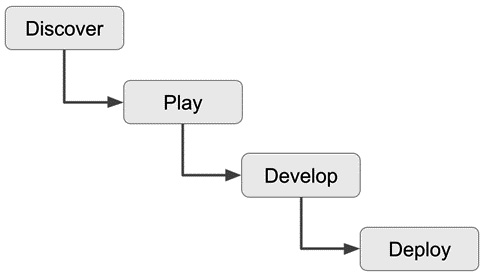Concept to solution in four steps
All ML projects are unique in some way: the organization, the data, the people, and the tools and techniques employed will never be exactly the same for any two projects. This is good, as it signifies progress as well as the natural variety that makes this such a fun space to work in.
That said, no matter the details, broadly speaking, all successful ML projects actually have a good deal in common. They require translation of a business problem into a technical problem, a lot of research and understanding, proofs of concept, analyses, iterations, consolidation of work, construction of the final product, and deployment to an appropriate environment. That is ML engineering in a nutshell!
Developing this a bit further, you can start to bucket these activities into rough categories or stages, the results of each being necessary inputs for later stages. This is shown in Figure 2.6:

































































